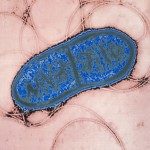Link to Pubmed [PMID] – 34117879
Link to DOI – 10.1093/bioinformatics/btab442
Bioinformatics 2021 Jun; ():
Modeling of protein family sequence distribution from homologous sequence data recently received considerable attention, in particular for structure and function predictions, as well as for protein design. In particular, Direct Coupling Analysis, a method to infer effective pairwise interactions between residues, was shown to capture important structural constraints and to successfully generate functional protein sequences. Building on this and other graphical models, we introduce a new framework to assess the quality of the secondary structures of the generated sequences with respect to reference structures for the family.We introduce two scoring functions characterizing the likeliness of the secondary structure of a protein sequence to match a reference structure, called Dot Product and Pattern Matching. We test these scores on published experimental protein mutagenesis and design dataset, and show improvement in the detection of non-functional sequences. We also show that use of these scores help rejecting non-functional sequences generated by graphical models (Restricted Boltzmann Machines) learned from homologous sequence alignments.Data and Code available at https://github.com/CyrilMa/ssqa.Supplementary data are available at Bioinformatics online.


